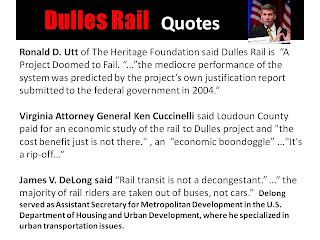In his Sept. 18 Local Opinions commentary, “Will Va. Republicans throw a monkey wrench into Dulles rail?,” Del. Robert Brink (D-Arlington) asserted that a project labor agreement (PLA) will save money on Phase 2 of the Dulles rail project and that Republicans are being obstructionists by targeting its elimination. Huh?
Those who oppose such PLAs do so for good reasons: PLAs discriminate against the majority of construction workers and firms that are “merit-shop” in favor of a minority of workers who are members of unions and the firms that employ them. They establish work rules that are often unnecessary and reduce the flexibility of contractors and engineers to efficiently manage the project. And they reduce the number of qualified bidders and increase the cost of labor and of the project, so our precious tax and toll dollars will not go quite so far. This is of particular concern in Virginia, where 96 percent of the private construction workforce does not belong to a union. A PLA reduces opportunities for these workers and their employers to participate.
How dare those Repubs obstruct this taxpayer funded union stimulus/payoff?
If this project overall was such a winner, why are the simple facts being whitewashed? The answer is clear. This whole scheme does not pass the sniff test, unless you are for increased tolls-taxes-and worse traffic. Another negative that gets no attention is that criminals are commuters to, and they use rail as a cheap way to get to work and back in the suburbs.
PLAs are a union payoff, just ask Dennis the MWAA Board member. Why do you think he has that grin on his face? I'll bet I know.

Coming soon...John B. Wood, aka, The Music Man.















